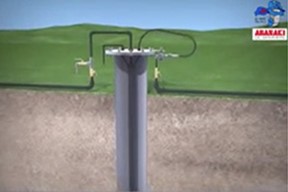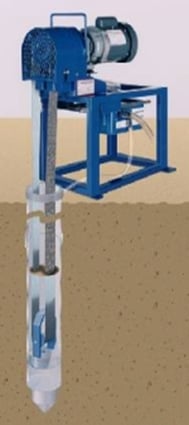DNAPL is short for dense non-aqueous phase liquid. Common DNAPLs include creosote, coal tar, and heavy oils; common DNAPL applications include degreasing and acting as a solvent. On the other hand, DNAPLs can also be the byproduct of industrial processes; in particular, a form of DNAPL known as multi-compound waste is a common type of waste oil. The defining aspect of DNAPLs, density, causes the mixture to sink in liquids like water or coolant. Because the sludge sinks, surface skimmers like rope skimmers have issues treating DNAPLs. Additionally, the density tends to cause problems with devices requiring a pump for collections because of its density, clogging the pipe or even breaking the pump itself.
Why are DNAPLs a Problem?
DNAPLs are common forms of wastewater pollution. Having DNAPLs leak into local groundwater is a violation of EPA regulations. In addition, DNAPLs can worsen working conditions in manufacturing. Often, these oils will emit a smell akin to sulfur as they break down.
DNAPLs may also reduce the effectiveness of machinery. The density can interfere with pumps or other methods of liquid conveyance, while the chemical properties of the DNAPL, depending on composition, can have adverse effects on the liquid it is suspended in.
These problems can actively interfere with the intended function of the machinery, leading to productivity loss or even damage to the machine.
How are DNAPLs Collected?
For DNAPLS, there are two general means of treatment: extraction and destruction. Extraction denotes the removal of the DNAPL from the liquid, while destruction means breaking down or neutralizing the DNAPLs to a level of minimal impact.
Methods of treatment include bioremediation, in situ methods like oxidation, reduction and flushing, barriers, soil vapor extraction (abbreviated as SVE) and air sparging, solidification and stabilization, pump and treat, and excavation. Skimmers are often used as supplements for in situ methods like flushing to hasten the removal of free-floating DNAPLs.
Belt Oil Skimmers are the Best Method?
 Belt oil skimmers can be an effective means of DNAPL treatment. Having an oleophilic belt gives the belt oil skimmer an inherent way to attract floating oils and emulsified fluids without relying on pumps or other like means. In addition, a belt oil skimmer like the PetroXtractor requires far less daily maintenance than pumps or other means of collection.
Belt oil skimmers can be an effective means of DNAPL treatment. Having an oleophilic belt gives the belt oil skimmer an inherent way to attract floating oils and emulsified fluids without relying on pumps or other like means. In addition, a belt oil skimmer like the PetroXtractor requires far less daily maintenance than pumps or other means of collection.
When pumps break down from clogs or internal mechanical failures, additional time is needed to correctly assess the problem and repair the problem. The pump also collects excess water, which is expected to be pumped back in the well and adds extra cost. Oil skimmers circumvent these problems.
The streamlined design of the PetroXtractor makes for easy assessment and repair in case of malfunction. Belt oil skimmers do not face the same clogging issues pumps do simply because there is almost nothing to clog.
Upkeep is straightforward and easy on a skimmer, often requiring a visit only once a week. The design of the PetroXtractor focuses on the collection of LNAPLs and DNAPLs without collecting water, preventing excess fluid from being collected. The PetroXtractor also can operate in fluctuating water levels as well as in more extreme conditions that pumps may have issues handling.
To learn more about oil skimmers, please contact our experts at 440-543-7400 or visit our website: www.abanaki.com
How Does a Well Oil Skimmer Work? | Abanaki
This animated demo shows how the PetroXtractor well oil skimmer works great with a large vertical drop making it ideal for wells and other small openings. Depths of 100 feet or more can be handled without the use of pumps.


